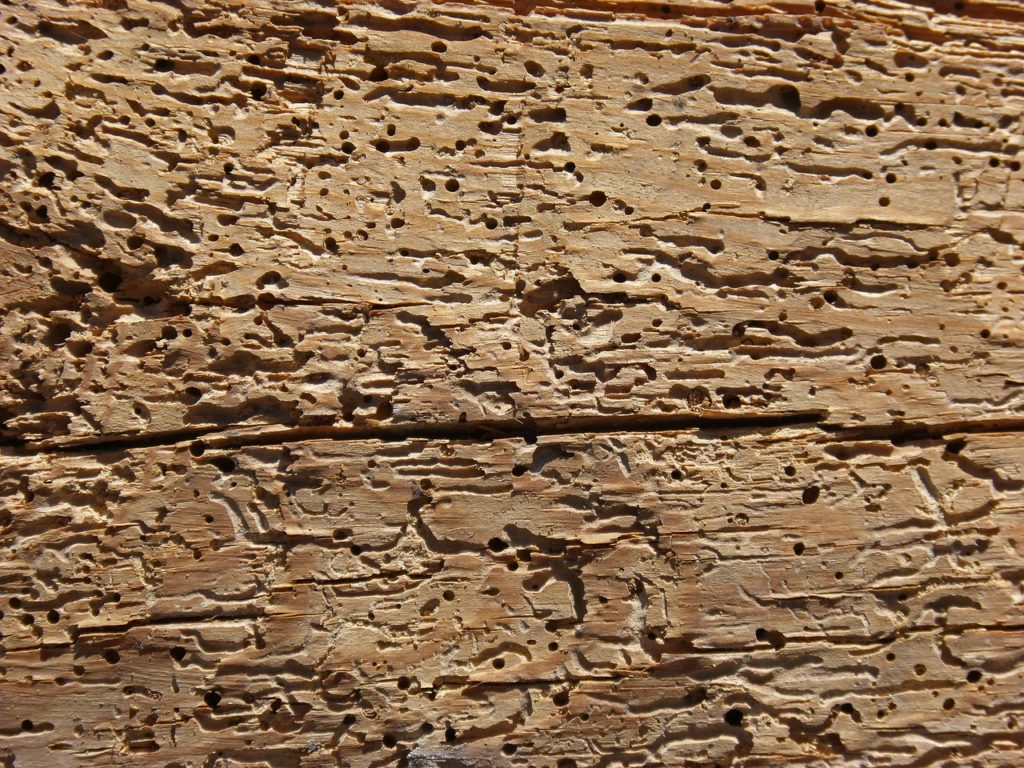Signs of Woodworm

WOODWORM can be found in any part of the home where there is timber if conditions exist for the infestation. But how do you spot it and what’s the best treatment? The extent of woodworm damage depends on how long the woodworm has been active. While it takes a long time for a woodworm infestation […]
Woodworm Lifecycle

There are four main stages that wood-boring beetles go through in their lifecycle. Egg form As with most beetles, the first stage is in egg form. A female woodworm will start the process by laying her eggs directly into the timber through any cracks or crevices that are present. After a few weeks, the eggs […]
Woodworm Damage
Not all woodworm is harmful. However, if is left untreated over time, woodworm can seriously weaken timber, causing severe damage within its structure. House Longhorn Beetle is known as the most damaging species, but any major infestation should be checked by a professional like SMPS. Whatever the damage, it is always advisable to to get it properly identified to determine whether […]
Wet Rot vs Dry Rot
Wet Rot Occurs more frequently, but is less serious; decay is typically confined to the area where timber has become and remains wet. Signs of wet rot : Distortion, discolouration, softness and cracking Loss of strength to the timber Visible fungal growth – this may sometimes occur Smell – there may be a damp musty smell […]
Wet Rot Treatment
Dampness combined with poor ventilation causes fungal attack on timber, better known as dry rot or wet rot. Dry rot is a serious form of timber decay. It can travel quickly through building materials other than timber, causing extensive structural damage within a short time. Identify the source of moisture and fix it Remove all […]
Identify Wet rot
Most wet rot outbreaks in homes rarely display visible fungus, because the activity is usually confined under the surface of the wood. In this regard they are a more efficient wood destroying fungi than dry rot – many wet rots don’t waste precious energy building fungal growths on masonry (though some, notably the Fibroporia species do so). All their […]
Dry Rot Treatment
Dry rot treatment Dry rot is a wood-destroying fungus that’s present in most regions of the world. Although it can affect woodland timbers, dry rot is better known for its ability to eradicate timbers in ships and buildings. If you are faced with a serious dry rot problem, investing in a professional to assess the […]
What causes dry rot?
Dry rot occurs when airborne spores come into contact with damp timber that has a moisture content of over 20%. These spores then germinate and sprout grey root hyphae strands. The hyphae grow into mycelium which covers the timber in a thick cotton-wool like substance. The fungus eats the wood and sucks the moisture from […]
Identify Dry Rot
Dry rot is a condition that can have seriously damaging effects on timbers in a home. Dry rot is a fungus that grows on, and breaks down timber. Despite its name, dry rot needs an environment that is high in moisture to grow. Leaking pipes, broken gutters, rain-water seeping through the roof and drainage issues are the […]